-
AI-driven chainsaw drone offers safer tree trimming near powerlines
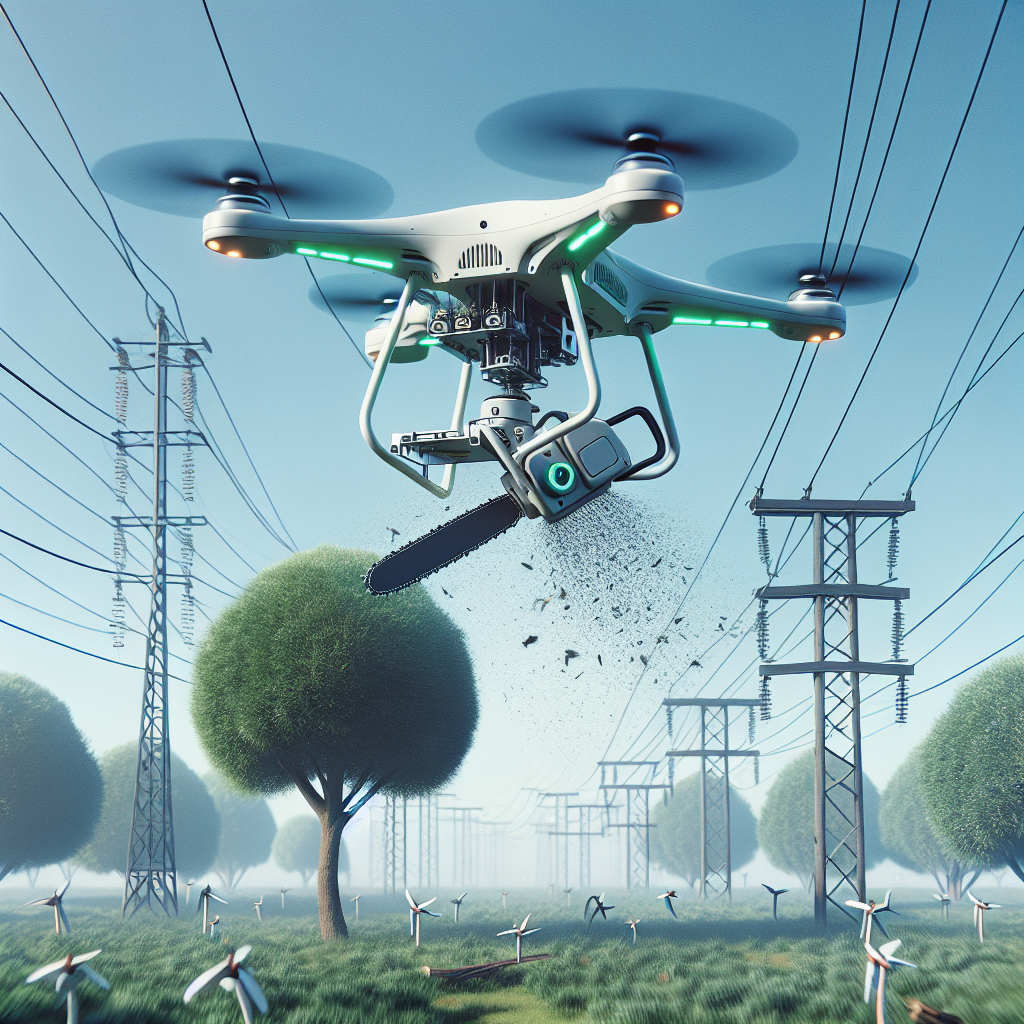
In an exciting development in the field of automation and safety, researchers at the University of Canterbury have introduced an innovative AI-driven chainsaw drone designed to enhance safety during tree trimming, particularly near powerlines. This cutting-edge technology aims to minimize the risks associated with traditional arborist work, where falling branches and equipment accidents can lead to severe injuries or even fatalities.
Professor Richard Green, a prominent figure in the computer science department, has been spearheading this project alongside UAV expert Dr. Sam Schofield. Their collaborative efforts have culminated in a drone capable of performing high-risk tasks typically handled by arborists. Through the integration of sophisticated algorithms and machine learning, this drone not only trims branches but also navigates complex environments with greater precision and safety.
Over the past eight years, the University of Canterbury team has worked diligently to develop unmanned aerial vehicles (UAVs) that can engage with their surroundings intelligently. As Professor Green notes, the transition from basic drones to advanced automated systems required significant advancements in understanding three-dimensional environments. This has been crucial for ensuring that the drone can interact effectively with the branches and surrounding obstacles during operation.
Before undertaking this project, the researchers conducted extensive consultations with various industries to identify pressing needs within arborist work. Their goal was clear: to create solutions that address real challenges faced by professionals in the field. This collaborative approach ensures that their innovations are not just theoretical but practical and applicable in real-world situations.
The introduction of the chainsaw drone is particularly relevant given the ongoing need for safer methods in high-risk industries. With incidents of accidents related to manual tree trimming work being a significant concern, this automated solution promises to mitigate some of those risks, allowing workers to focus on other critical tasks without the constant threat of physical danger from saws and falling limbs.
The potential implications for the arborist industry are substantial. By integrating such advanced technology, businesses can significantly improve their safety records while simultaneously increasing efficiency. This could lead to reduced insurance costs, lower liability risks, and enhanced employee satisfaction as workers are given tools that prioritize their well-being.
This innovation aligns with broader trends in the automation landscape, where AI technologies are being increasingly embraced to perform hazardous tasks across various sectors. As industries look for ways to enhance safety and efficiency, the chainsaw drone stands out as a prime example of how technology can directly contribute to better working conditions.
As this project moves closer to implementation, it remains crucial to address any remaining questions regarding operational protocols and regulatory compliance. For the chainsaw drone to become a standard tool in the arborist industry, it must adhere to safety regulations and demonstrate reliability in diverse conditions.
In conclusion, the chainsaw drone developed by the University of Canterbury is a remarkable example of innovation meeting the critical needs of safety in high-risk environments. As this technology begins to make its way into practical applications, it holds the promise of reshaping how arborists and utility companies perform their tasks while significantly improving worker safety and efficiency. The future of tree trimming looks brighter with AI-driven solutions paving the way for less risky, more streamlined operations.
-
Fintech CEO’s AI hack lets him test ideas quickly, saving hours explaining them to his engineers: ‘It comes back with prototypes in 20 minutes’

In the rapidly evolving landscape of fintech, the ability to innovate quickly and efficiently is crucial for success. Swedish fintech giant Klarna’s CEO, Sebastian Siemiatkowski, has recently unveiled a novel approach to fostering innovation within his team, leveraging artificial intelligence in a method he calls “vibe coding.” Speaking on the podcast Sourcery, Siemiatkowski detailed how this technique enables him to transform natural language descriptions into functional code, omitting the traditional hassles of communicating abstract ideas to engineers.
Traditionally, the prototyping process demands significant interaction and back-and-forth between business leaders and engineering teams. Siemiatkowski breaks this mold, stating, “I have never coded, right? I was a business person. Now, thanks to vibe coding, I can produce a prototype in 20 minutes.” This hands-on approach empowers him to independently evaluate and iterate on ideas before bringing them to his engineers, ultimately allowing for a more streamlined development process that preserves the engineers’ focus on high-value tasks.
However, Klarna’s foray into AI isn’t without its lessons. In 2024, the firm faced backlash when its earlier AI initiatives aimed at replacing 700 customer support agents did not yield the desired efficiency, leading to a strategic pivot where engineers and support staff were required to manage increased customer service demands. This past hurdle prompted a saxophone acknowledgment from Siemiatkowski regarding AI’s limitations in replacing human ingenuity and decision-making.
He remarked in a Bloomberg interview on the dangers of over-emphasizing cost reductions, which he suggested led to a compromise on service quality. Here’s where vibe coding stands out: it honors the balance between innovation and reliance on human expertise. This delicate balance reflects a broader truth in the AI landscape; while AI can arm leaders with rapid prototyping capabilities, it does not shield them from critical thinking and strategic oversight.
Siemiatkowski described his daily routine as one of rapid iteration facilitated by vibe coding. Rather than entering meetings with vague ideas, he verbally sketches product concepts and uses AI to craft responsive prototypes. As he puts it, “I come and say, ‘Look, I’ve actually made this work. What do you think? Could we do it this way?’” This methodology not only expedites the review process but also enhances creativity and collaboration within his team.
The concept of vibe coding isn’t isolated to Klarna; it echoes a growing trend across the technology sector. Even powerful CEOs like Sundar Pichai of Google are exploring the utility of AI coding assistants for personal projects, suggesting a broader industry shift towards integrating AI into day-to-day operations. Nevertheless, this innovative approach isn’t without its caveats. A report from Fastly indicated that 95% of developers faced additional challenges Ironically, fixing AI-generated code, revealing both the potential pitfalls and the importance of oversight in automation efforts.
Experts have voiced concerns that an overdependence on AI technology may dull developers’ programming acumen or lead to significant security flaws within systems. MIT computer scientist Daniel Jackson publicly warned about the inherent risks of unchecked AI utilization, labeling the potential consequences as “broken code” filled with vulnerabilities.
Despite these concerns, Siemiatkowski remains optimistic about vibe coding’s promise. He views it as a means of merging creative business vision with effective technological execution. As he articulates, “I’ve been vibe coding my whole life.” This assertion underscores the importance of ensuring that human ingenuity complements technological advancements.
As AI continues to reshape industries, Klarna’s approach through vibe coding not only demonstrates an innovative method for rapid prototyping but also serves as a reminder of the importance of maintaining a nuanced understanding of both the capabilities and limitations of artificial intelligence. For business leaders wishing to leverage AI, studying and adapting this balance may prove critical to cultivating sustainable innovation.
-
AI is helping General Motors to avoid expensive supply chain interruptions like hurricanes and material shortages
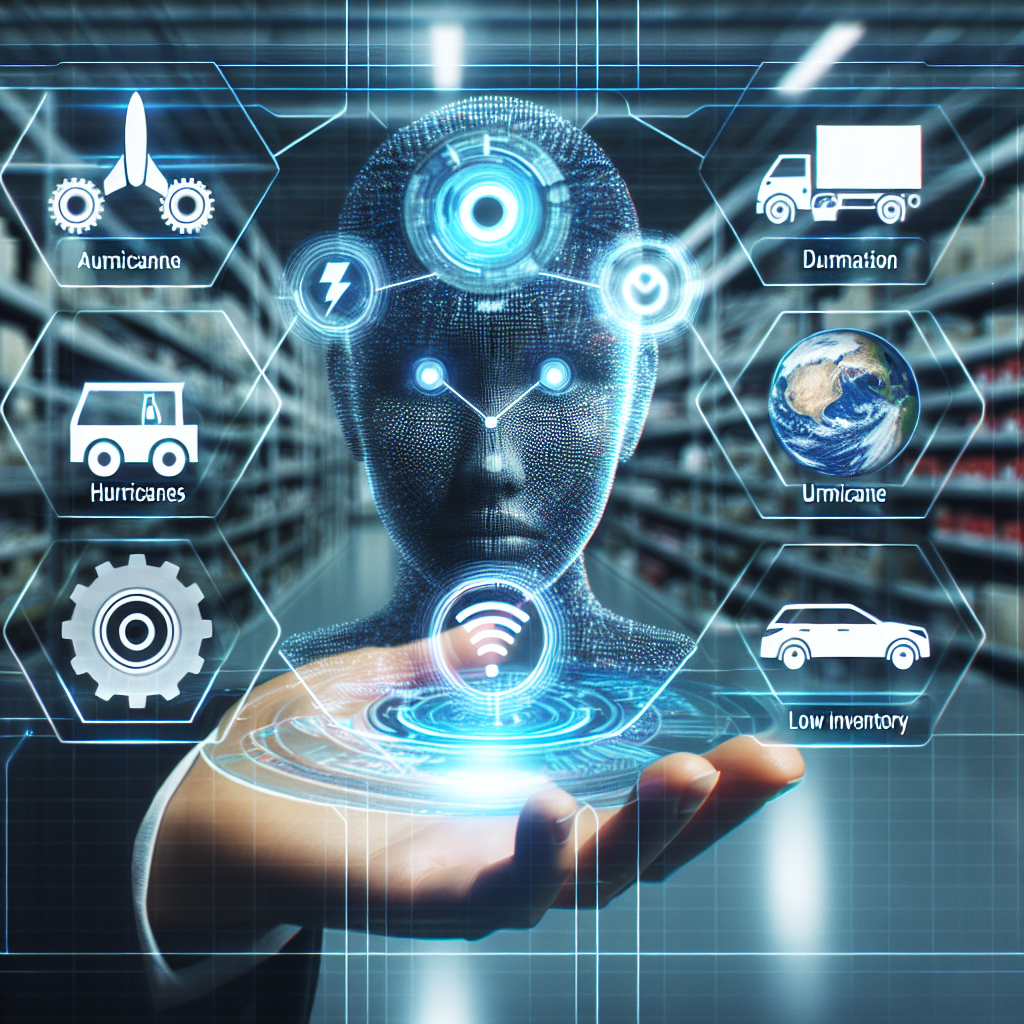
In recent years, supply chain management has risen to the forefront of business discourse, particularly as various industries have faced unprecedented disruptions. Among them, General Motors (GM) stands out, wielding artificial intelligence (AI) as a key weapon against costly interruptions. With its innovative AI system, GM has not only weathered the storm—quite literally—but has also emerged more resilient in the face of future supply chain challenges.
In September 2024, when Hurricane Helene struck North Carolina, GM’s AI foresaw the impact on one of its vital suppliers, Auria Solutions. This company is responsible for producing carpets for several of GM’s flagship SUVs, including models like the Chevy Tahoe and Cadillac Escalade. Thanks to their predictive technology, GM was prepared for the aftermath of the hurricane, demonstrating the power of AI in actionable insights. Kevin Kelly, a spokesperson for GM, reported that they promptly assisted Auria by drilling a new water well, helping to restore operations efficiently.
Such proactive measures underscore the significance of the AI tools GM has been developing over the last four years, aimed at alerting the company to potential supply chain disruptions before they manifest. According to Sean Gaskin, the director of systems engineering at GM, this initiative has successfully averted at least 75 production stoppages in a single year—a remarkable feat highlighting the technology’s immediate benefits to business operations.
The impetus for this robust AI-driven approach can be traced back to the semiconductor shortages that plagued the automotive industry between 2020 and 2023. These shortages forced many companies, including GM, to shut down production lines, leading to significant revenue losses. Jeff Morrison, GM’s senior vice president of global purchasing and supply chain, articulated a critical lesson learned during that tumultuous period: the importance of data management and analytics for enhancing supply chain performance.
To adapt to the challenges presented by the pandemic, GM expanded its supplier monitoring activities tenfold. By implementing AI, the automaker could track tier-one suppliers and extend its insights to secondary and tertiary suppliers, known in supply chain management as tier N companies. This level of comprehensive monitoring is unprecedented and empowers GM to anticipate potential disruptions resulting from both global events, like the throttling of rare earth magnets in China, and more localized issues, such as individual suppliers missing production deadlines.
Additionally, GM uses AI-powered news scanning and data mapping to ensure comprehensive oversight of its supply chain. The real-time insights generated by this technology offer unprecedented visibility into potential vulnerabilities, enabling GM to make informed, nimble decisions to mitigate risks associated with supply interruptions. This commitment to innovation demonstrates how GM is leveraging cutting-edge technologies not merely for operational efficiency but also as a means of strategic differentiation in an increasingly competitive market.
The results of GM’s advanced AI initiatives showcase a transformative approach to supply chain management. By integrating predictive modeling with real-time data insights, the automotive giant is not just reacting to issues but proactively addressing them before they escalate. This philosophy underscores a significant shift in corporate culture towards a data-driven mindset.
As the landscape of supply chain management continues to evolve, the role of AI will undoubtedly expand. For other businesses looking to thrive in similar circumstances, General Motors serves as a prime example of how to blend technology with logistical foresight to navigate the complexities of modern supply chains. In harnessing the power of AI, GM not only secures its operations but also sets a precedent for how the industry can adapt and succeed in the face of future challenges.
-
The Metaverse is not dead and AI may be its new savior

The concept of the Metaverse has been a focal point of technology discourse over the past few years, especially after Facebook’s transition to Meta. Yet, the anticipated Metaverse revolution has encountered significant challenges. Recent insights from Meta’s leadership, particularly during the Meta Connect 2025 Dev Keynote, shed light on the evolution of this technology and its potential revival through artificial intelligence (AI).
Samantha Ryan, Meta’s VP and Head of Metaverse Content, acknowledged the hurdles faced since the company’s rebranding. While the allure of virtual reality (VR) headsets captured the imagination, the reality was far less enchanting for users who found the initial experiences underwhelming. “VR is evolving in new ways…It’s tough to navigate, and we at Meta have a lot to learn as well,” Ryan stated, reflecting a candid admission of the current state of VR technology.
These remarks were echoed by Meta’s CTO, Andrew Bosworth, who referred to the transition as a “choppy few years.” However, he noted with optimism that AI could catalyze a significant upgrade in the Metaverse experience. This underscores a shift towards harnessing AI not only for enhancing user interaction but also for transforming how developers approach building virtual environments.
The focus on AI was unmistakable during the keynote, particularly with the introduction of new programming platforms like Meta Horizon Engine and Meta Horizon Studio. An exciting aspect of Horizon Engine is its replacement of the Unity engine, allowing for the creation of richer and more immersive realities. Demonstrations showcased virtual events, such as a concert by Sabrina Carpenter, where the audience was composed of thousands of VR avatars, indicating that major advancements are underway.
Perhaps the most transformative announcement was the introduction of a prompt-driven Build with AI interface. This innovative tool aims to simplify world-building processes for developers. By allowing creators to generate foundational worlds and modify them through prompts rather than intricate coding, this interface positions itself as a game-changer. It not only accelerates world creation but also allows for swift adaptations based on user feedback, which is critical for maintaining engagement in a rapidly evolving digital landscape.
Despite these advancements, challenges remain. The Metaverse continues to be a proprietary space, predominantly accessed through specific VR headsets like the Quest 3. Many users still find the experiences lackluster, underlining the need for more engaging content and functionalities. The integration of AI components does not eliminate these obstacles entirely but represents a notable shift towards enhancing user experience and offering developers better tools.
As we look forward, the role of AI in the Metaverse will be pivotal. Technologies that augment user interactions, offer personalization, and streamline the creation process will likely dictate the future success of this ambitious virtual environment. Meta’s efforts demonstrate a willingness to adapt and innovate, recognizing the importance of aligning current capabilities with user expectations. The excitement surrounding AI’s potential, coupled with transformative tools, could provide the momentum necessary for the Metaverse to realize its original promise.
In conclusion, while the Metaverse may have faced significant setbacks, it is far from being on the brink of collapse. With the infusion of AI as a central pillar of development, there is a renewed sense of possibility. The advancements discussed at the Meta Connect 2025 Dev Keynote could herald a new era for virtual worlds, fostering environments where users can engage more fully and developers can create more diverse and dynamic content.
-
GreyNoise unveils MCP Server to power AI-driven SOC workflows
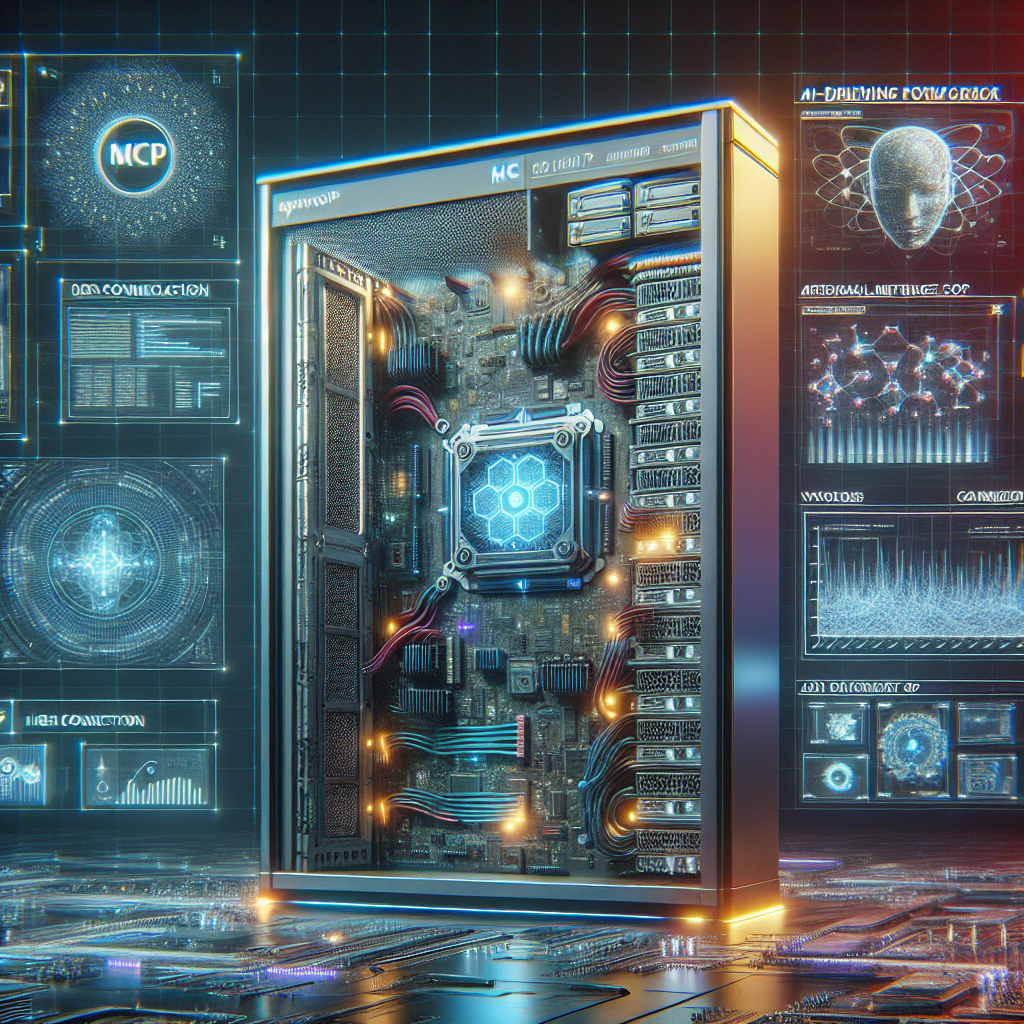
In a groundbreaking move for cybersecurity, GreyNoise Intelligence has unveiled the GreyNoise Model Context Protocol (MCP) Server, a transformative tool designed to enhance AI-driven Security Operations Center (SOC) workflows. This new server allows MCP-compatible language models (LLMs) and agents to directly query GreyNoise APIs, providing real-time, actionable threat intelligence that can redefine how organizations manage their security infrastructures.
According to Ash Devata, CEO of GreyNoise, “AI Agents represent a major shift in cybersecurity, moving beyond simple workflow automation to autonomous reasoning, planning, and executing.” This shift is expected to radically alter every aspect of security workflows—from case management to complete playbook automation. The introduction of the GreyNoise MCP Server plays a pivotal role in this evolution, enabling AI agents to access accurate, near-real-time threat intelligence essential for optimizing SOC operations.
The adoption of agentic AI promises to enhance SOC capabilities significantly. Rather than merely executing predefined tasks, these AI agents will adapt and respond in real time as situations change, which is essential for keeping up with the rapid pace of automated attacks. This newfound capability allows security teams to be more proactive, broadening their response strategies from reactive measures to anticipatory actions.
Central to the functionality of the GreyNoise MCP Server is its ability to provide AI models and agents with dependable, real-time threat intelligence. With the Model Context Protocol, agents can query GreyNoise instantaneously to assess whether an IP is benign, malicious, suspicious, or unknown. Furthermore, agents can identify vulnerabilities that are actively being exploited in the wild, enabling organizations to respond promptly and effectively.
This innovative capability is set to revolutionize AI-driven SOC workflows in multiple ways:
- Noise Reduction & Alert Triage: By integrating live threat intelligence, agents can effectively differentiate between benign and malicious traffic. This significantly reduces false positives, saving precious time for analysts who can focus on more critical activities rather than sifting through irrelevant alerts.
- Automated Threat Investigation: With the power of real-time data, agents can navigate through threat information without needing manual queries. This swift analysis ensures that they can arrive at accurate conclusions, complete with contextual support, in mere seconds.
- Prioritized Vulnerability Remediation: Real-time intelligence allows agents to pinpoint which vulnerabilities are under active exploitation. This empowers security teams to swiftly patch threats as they arise, aligning their resources efficiently with real-world risks.
The introduction of the GreyNoise MCP Server represents not just a singular advancement in technology, but a fundamental shift in how cybersecurity can leverage AI for enhanced protection. By embedding GreyNoise intelligence directly into agent reasoning, the server guarantees that AI agents utilize the same accurate, timely, and contextual data relied upon by human analysts. This alignment of AI tools with real intelligence is crucial for unlocking both speed and precision at scale, which are essential for effective cybersecurity.
As organizations continue to navigate an increasingly complex threat landscape, the need for dynamic and responsive security strategies has never been more apparent. With tools like the GreyNoise MCP Server, the integration of AI into cybersecurity is not merely an enhancement; it is becoming a necessity. By equipping SOC teams with the intelligence they need to act decisively and efficiently, GreyNoise is poised to lead the charge in redefining the future of cybersecurity.
-
Meet Macroscope: an AI tool for understanding your code base, fixing bugs | TechCrunch
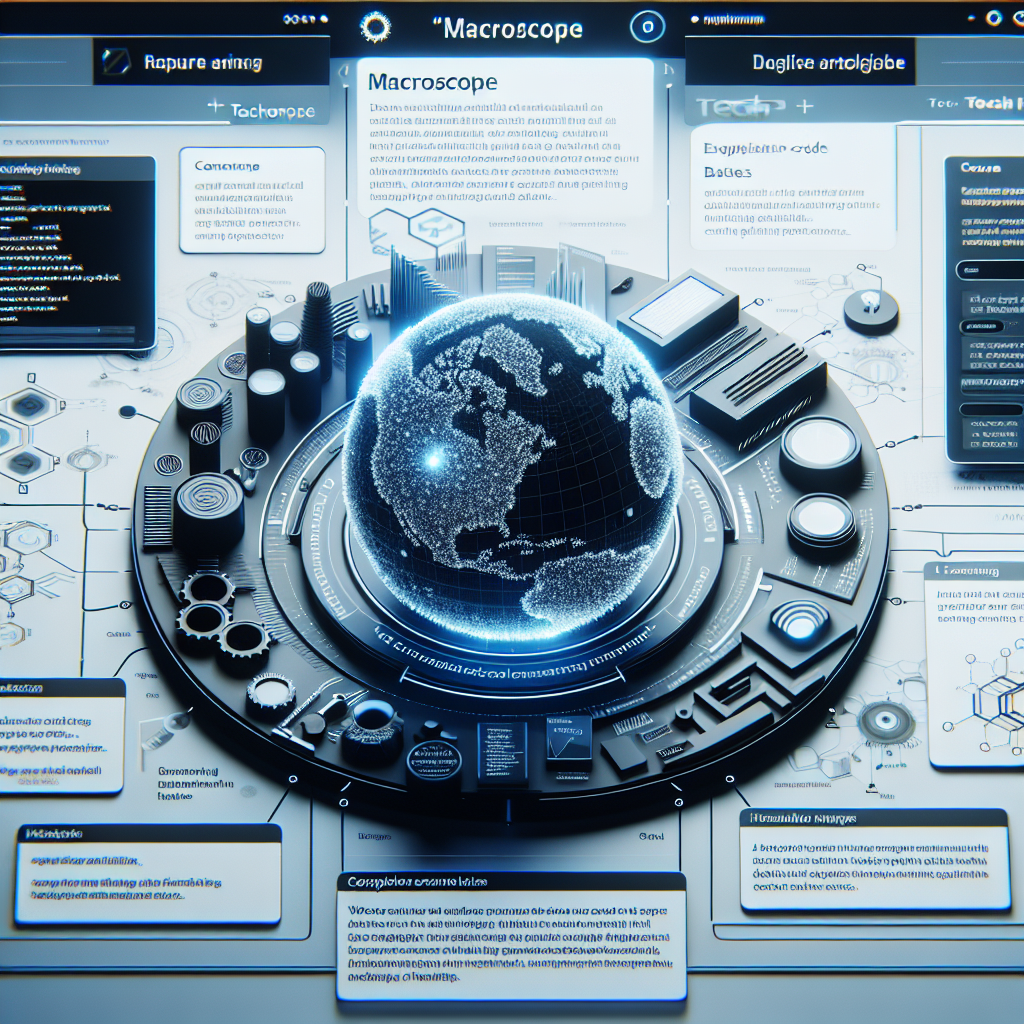
In a landscape where software development is increasingly complex, the need for intuitive tools has never been more critical. Enter Macroscope, the latest venture from the minds behind Periscope, aimed at revolutionizing how developers and product leaders interact with their code bases. Launched by Kayvon Beykpour, former head of product at Twitter, Macroscope offers a fresh perspective on code management and bug fixing through the power of artificial intelligence.
Founded in July 2023, Macroscope is the brainchild of Beykpour and his childhood friend Joe Bernstein, both of whom have considerable experience in technology startups, having previously worked at Periscope and their past enterprise startup, Terriblyclever. They are joined by Rob Bishop, a seasoned entrepreneur who previously sold his machine learning company, Magic Pony Technology, to Twitter. This stellar team brings a wealth of experience and insight to a pressing industry problem.
At its core, Macroscope is described as an “AI-powered understanding engine” designed to alleviate the burdens developers often carry when managing extensive codebases. Traditional tools like JIRA, Linear, and even spreadsheets can overwhelm engineers, often resulting in lost time and productivity. With Macroscope, Beykpour envisions a world where developers can focus on what truly matters—writing code—rather than getting bogged down by the minutiae of project management.
“I feel like I lived this pain…at every company I worked at… it was literally most of my job—and my least favorite part of my job as the head of product at Twitter,” Beykpour explained during an interview. This revelation stems from his firsthand experiences where understanding what countless developers were doing became an overwhelming task, especially in large organizations. Macroscope aims to solve this problem by bringing clarity to code changes and updates automatically.
As part of its functionality, Macroscope integrates seamlessly with GitHub, allowing users to install its application effortlessly. This initial step enables the software to analyze the code base, tracking changes and identifying bugs. In addition to GitHub, Macroscope offers optional integrations with tools such as Slack, Linear, and JIRA, ensuring that teams can easily incorporate the system into their existing workflows.
The implications of using a tool like Macroscope are broad. By automating the understanding of codebases, it significantly reduces the time spent in status meetings and enhances overall team efficiency. Developers, product leaders, and stakeholders can access crucial insights without the traditional overhead associated with project management, fostering a more productive work environment.
This innovation speaks not only to the immediate needs of software development teams but also reflects a broader trend in the tech industry—leveraging AI to streamline processes and enhance productivity. As companies continue to demand more from their engineering teams, tools like Macroscope are poised to become indispensable, offering clear value not just in performance but also in preserving the well-being of developers.
While specific pricing models and future updates remain undisclosed, the founders suggest that Macroscope will evolve based on user feedback and consistent innovation. This adaptability could prove vital for its long-term success, ensuring it meets the dynamic needs of the development community. With a strong foundation in past entrepreneurial success and an acute awareness of developers’ pains, Macroscope is well-positioned to disrupt the traditional project management space with its pioneering approach to AI integration.
By addressing some of the most pressing challenges in software development today, Macroscope represents a significant technological shift. Developers can expect a streamlined experience, where understanding the complexities of their codebase becomes an effortless task rather than a daunting challenge. As Macroscope spearheads this movement, it invites industry leaders to consider how AI can redefine productivity in the realm of software engineering.
-
Israel’s Glilot Capital raises $500 million for new AI and cybersecurity investments

In a remarkable display of confidence in the growing fields of artificial intelligence (AI) and cybersecurity, Glilot Capital, one of Israel’s largest venture capital firms, has successfully raised $500 million for two new early-stage funds. This financial milestone highlights the resilience of Israel’s tech ecosystem amid geopolitical challenges, showcasing that international investors, including pension funds and financial institutions from the U.S. and Europe, remain eager to support promising startups.
The newly established funds will focus on AI and cybersecurity, sectors that are increasingly recognized for their strategic importance in today’s digital landscape. Glilot Capital aims to boost its portfolio with 12 startups from these domains, with an initial emphasis on companies that bolster AI security measures and respond to AI-driven attacks. This approach is particularly timely, as the intersection of AI and cybersecurity is projected to become more critical than ever.
Kobi Samboursky, co-founder and managing partner of Glilot Capital, expressed enthusiasm over the growth potential in these combined fields, suggesting that the upcoming five to six years could spawn numerous innovative companies. According to Samboursky, the need for robust cybersecurity strategies is escalating, especially as cybercriminals increasingly adopt AI technologies to enhance their attacks.
Glilot’s new seed fund, its fifth, alongside the Glilot Plus fund for early-stage investments, emphasizes a strategic focus on companies poised to tackle the sophisticated challenges posed by modern cyber threats. Past successes further validate this strategy; since its inception in 2011, Glilot has made 22 investments, and in 2023 alone, it has already backed eight startups. Notably, companies within its portfolio have attracted an impressive $700 million in follow-on capital, underscoring the potential these investments hold for significant returns.
Highlighting the market dynamics, Samboursky pointed out that cybersecurity is likely to surpass previous technological milestones, like cloud security. As AI becomes interwoven with security challenges, it represents a burgeoning opportunity for investors aiming to capitalize on emerging trends. Glilot Capital’s proactive approach signifies a larger trend within the investment community, which increasingly recognizes AI and cybersecurity as vital arenas for both innovation and financial growth.
The urgency to enhance cybersecurity measures is almost palpable. As attackers deploy more sophisticated AI tools, the need for innovative protective solutions accelerates. Samboursky’s insights reflect a broader concern within the industry regarding how to stay ahead of these evolving threats. The recognition that proactive measures are necessary to safeguard current and future technologies is a clear call-to-action for developers and investors alike.
Further emphasizing Israel’s dominance in the cybersecurity landscape, Samboursky referred to the country as ‘number one in the cyber domain.’ This assertion is supported by significant acquisitions in recent months, including Palo Alto Networks’ acquisition of CyberArk Software for $25 billion and Alphabet’s $32 billion purchase of the startup Wiz. These high-profile transactions illustrate a robust appetite for cybersecurity solutions, and Glilot’s investments are poised to ride this wave of interest.
With more than $1 billion under management and a sharp focus on the future of AI and cybersecurity, Glilot Capital is not just observing changes in the market; it’s actively shaping them. By channeling substantial resources into innovative startups, the firm positions itself at the forefront of technological advancement. As AI-driven security challenges continue to emerge, investment in these areas will likely become increasingly paramount for businesses looking to safeguard their operations.
This latest funding initiative by Glilot Capital underscores the belief that the future of both AI and cybersecurity lies in their convergence. As attackers become savvier and more resourceful, it’s clear that solutions evolved through forward-thinking investments are essential for maintaining security and stability in our digital world.
-
Workday Pays $1.1 Billion for Sana’s AI-Powered Workplace Tools

In a strategic move to enhance its human resources offerings, Workday has announced the acquisition of Sana, an artificial intelligence (AI) company, for a staggering $1.1 billion. This acquisition signifies a pivotal moment for modern workplace management as it leverages advanced AI capabilities to streamline tasks and boost employee productivity.
The deal, publicly revealed on September 16, aligns perfectly with Workday’s goal to reimagine the future of work. With this acquisition, Workday aims to integrate AI agents into its platform, enabling clients to automate repetitive tasks, craft presentations, and perform comprehensive searches across a company’s data sources. This innovation is expected to transform the way businesses operate, ultimately streamlining workflows and enhancing efficiency.
Gerrit Kazmaier, the president of product and technology at Workday, expressed enthusiasm regarding the acquisition, highlighting that Sana’s AI-native approach and aesthetically pleasing design resonate with Workday’s vision. He stated, “This will make Workday the new front door for work, delivering a proactive, personalized, and intelligent experience that unlocks unmatched AI capabilities for the workplace.”
Sana, founded in 2016, has developed two core products—Sana Learn and Sana Agents—serving over a million users across hundreds of enterprises. With this acquisition, the company continues to evolve its products while simultaneously augmenting the Workday experience. Joel Hellermark, founder and CEO of Sana, shared his excitement, stating that this collaboration opens doors to better AI tools for Workday’s 75 million users, marking a significant shift towards an era of superintelligence at work.
The timing of this acquisition coincides with Workday’s recent surge in product rollouts and partnerships, indicating its proactive strategy in enhancing service offerings. For instance, last month, Workday teamed up with Zuora, a monetization platform, to integrate order-to-cash automation with Workday’s Financial Management solutions. This partnership aims to simplify complex billing and revenue management for business-to-consumer transactions, further enhancing the holistic approach to workplace management.
Notably, research conducted by PYMNTS Intelligence reveals that a significant majority of workers perceive the potential of generative AI (gen AI) to augment productivity. Among frequent users, 82% believe that generative AI could lead to greater efficiency in their job functions. However, this increasing reliance on AI also brings forward concerns regarding job displacement; workers aware of gen AI’s capabilities manifest greater worries – 50% of frequent users fear potential job loss, compared to only 24% of those less familiar with the technology.
As generative AI continues to evolve, understanding its implications becomes pivotal. The juxtaposition of excitement for enhanced productivity against the backdrop of job displacement concerns creates a complex narrative about the future of work. Employees increasingly recognize that while AI tools can significantly boost their output, they also pose challenges that require careful navigation.
Overall, Workday’s acquisition of Sana is not just a financial transaction, but a strategic alignment towards developing an intelligent workplace ecosystem. By harnessing AI technology, Workday seeks to deliver newfound efficiency and personalization in the workplace, reflecting broader trends in the industry. This acquisition will likely reshape interactions within organizations, fostering environments where technology and human ingenuity coalesce seamlessly.
As the partnership unfolds, stakeholders across the business landscape will undoubtedly watch closely. The integration of Sana’s advanced tools into Workday’s platform is poised to set new benchmarks for workplace efficiency and demonstrate the considerable impact of AI on business strategies. The future of work, with its increasing dependency on AI solutions, stands at an inflection point; this acquisition may just be the catalyst that steers it towards unprecedented heights.
-
Roosevelt Road Specialty and Neural Earth Announce Strategic Partnership to Advance AI-Powered Risk Intelligence in Commercial Property Insurance
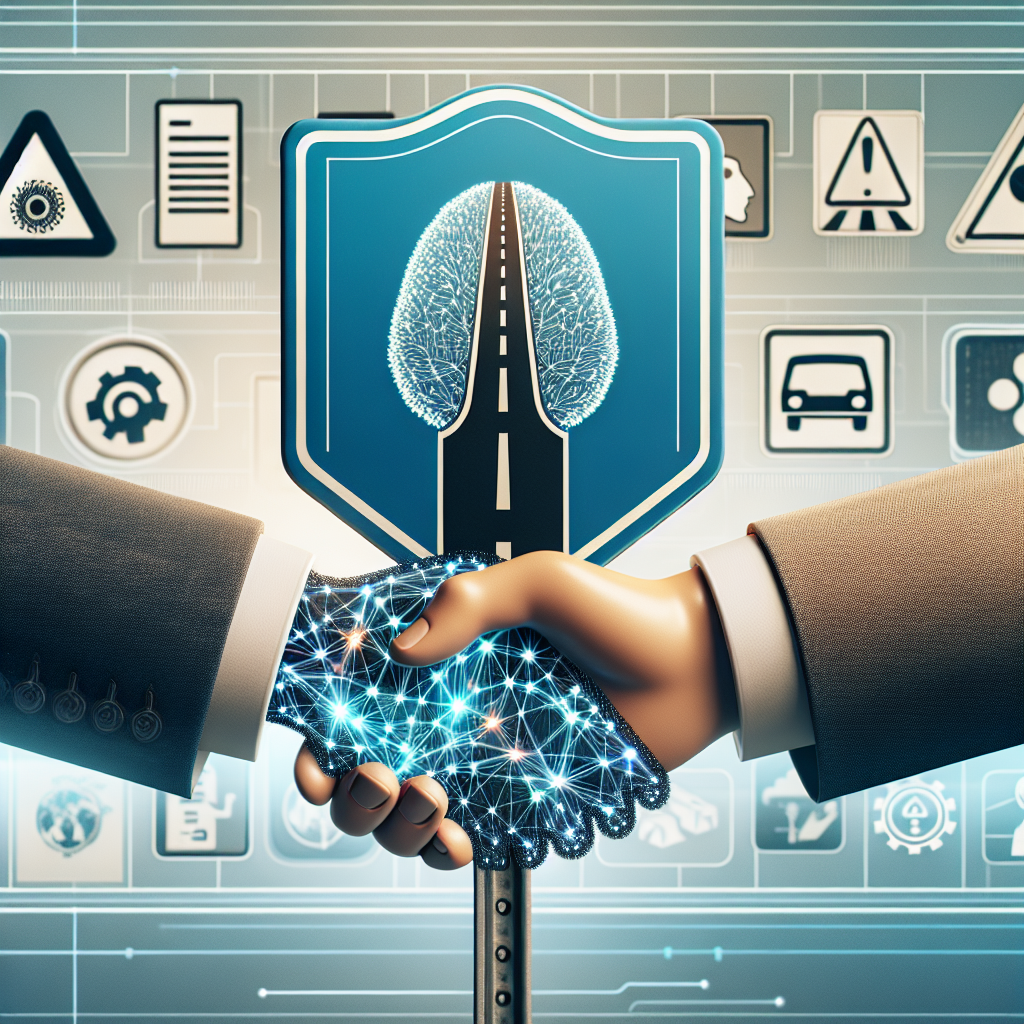
The commercial property insurance sector is poised for a transformative shift, thanks to a groundbreaking partnership between Roosevelt Road Specialty and Neural Earth Inc. Announced on September 16, 2025, this collaboration aims to leverage AI-powered risk intelligence to enhance underwriting processes, ultimately benefiting both insurers and policyholders.
Roosevelt Road Specialty, a prominent Managing General Underwriter (MGU), has made significant strides in delivering innovative insurance solutions tailored to its clients’ needs. By partnering with Neural Earth, a leader in AI-driven geospatial risk analytics, the firm is positioning itself at the forefront of technological advancements in the insurance industry. This partnership responds to the growing demand for data-driven approaches in risk assessment, helping to redefine the landscape of commercial property insurance.
Daniel Hickey Jr., the CEO of Roosevelt Road Specialty, emphasized the company’s commitment to equipping its underwriters with cutting-edge tools. By integrating the Risk Intelligence Platform from Neural Earth into their workflows, they can enhance their capability to assess complex property risks. The integration allows for more refined portfolio strategies and improved service delivery to clients.
This strategic move is particularly significant as it places Roosevelt Road Specialty among the pioneers in implementing AI-powered geospatial analytics directly into property underwriting. The use of such advanced technology indicates a shift toward more accurate and transparent underwriting—a crucial element for enhancing customer trust and satisfaction in an often opaque industry.
In an era marked by an increasing number of risks, understanding the complexities of property insurance has never been more vital. The partnership allows Roosevelt Road Specialty to employ sophisticated data analytics to manage risks more effectively, hence providing tailored solutions that meet the specific needs of various sectors, including construction, trade contractors, real estate, and more.
Blair Austin Childs, Co-Founder and CEO of Neural Earth, noted that this collaboration is reflective of Roosevelt Road Specialty’s vision to not merely adapt to the changing landscape of property underwriting but to actively shape its future. The emphasis on data-driven underwriting practices echoes a paradigm shift in the industry, signaling the importance of proactive risk management at a time when the complexities of risk are continually evolving.
The partnership is expected to yield significant benefits not only for the underwriters at Roosevelt Road Specialty but also for the clients they serve. With enhanced data analytics capabilities, underwriters will be able to deliver quicker and more precise risk assessments, potentially leading to better insurance products and pricing strategies tailored to the unique characteristics of each property.
Furthermore, the commitment to maintaining all underwriting, claims handling, and legal processes in-house enables Roosevelt Road Specialty to reduce claims severity while maximizing long-term value for its clients. This operational model distinguishes it from competitors who may rely on external resources, thereby enhancing accountability and responsiveness to client needs.
Roosevelt Road Specialty’s proactive approach also encompasses specialized coverage for high-risk sectors such as sports and entertainment, which, in the wake of recent economic challenges, need robust and adaptable insurance solutions. The strategic partnership with Neural Earth is set to bolster their efforts in safeguarding clients from costly claims and uncertainties.
As the commercial property landscape continues to evolve, the integration of AI technologies into risk assessment and management processes will likely become a cornerstone of successful insurance strategies. This partnership not only illustrates the robust potential of AI in transforming traditional sectors but also highlights the critical role that innovative insurance providers are increasingly playing in navigating modern risk landscapes.
In conclusion, the strategic collaboration between Roosevelt Road Specialty and Neural Earth signifies a notable progression in the integration of advanced technology within the commercial property insurance domain. Through AI-driven insights and analytics, Roosevelt Road Specialty is set to redefine risk intelligence, ensuring they are well-equipped to meet the demands of today’s complex risk environment while delivering superior value to clients.
-
Mad Egg co-founder Conor Sheridan raises $37m Series B funding round for his AI start-up Nory
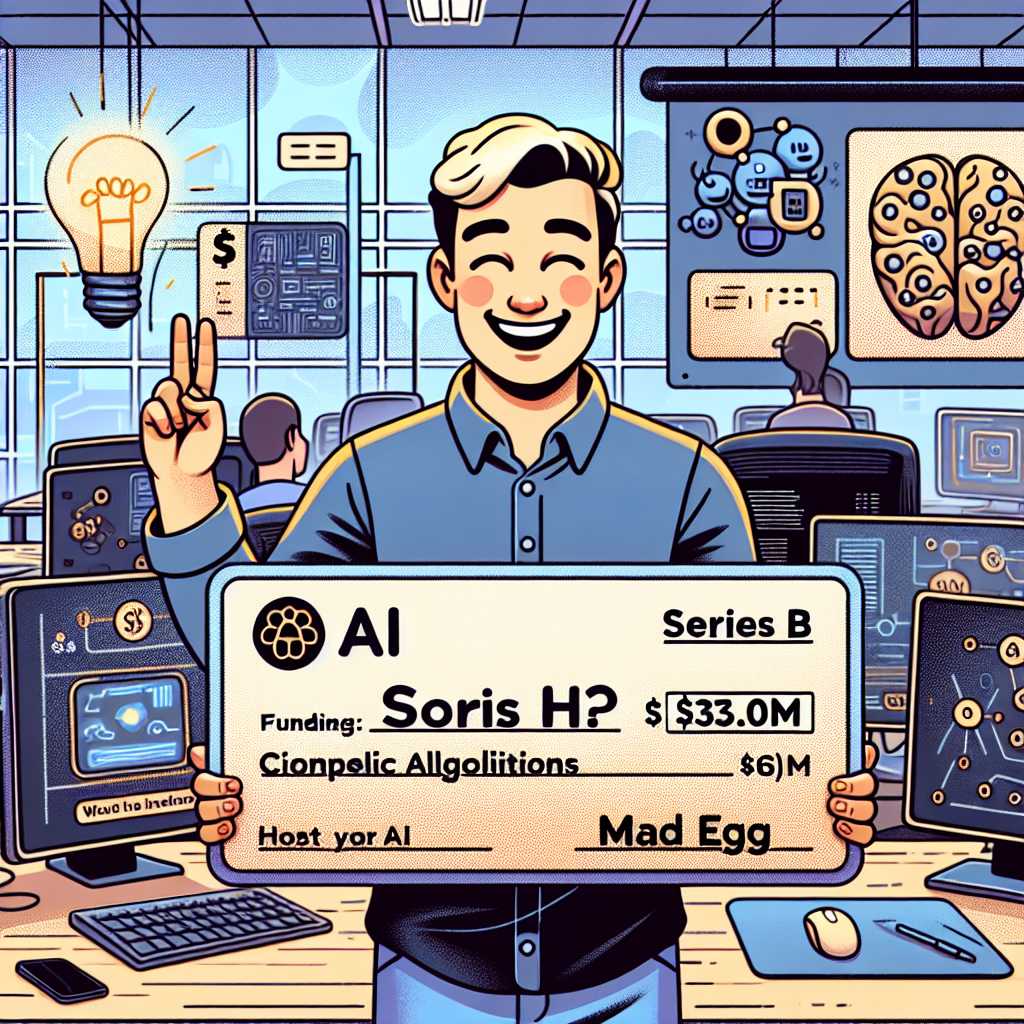
In a significant boost for the hospitality technology sector, Conor Sheridan, co-founder of the Mad Egg chicken restaurant chain, has successfully raised a $37 million Series B funding round for his AI-driven start-up, Nory. This new capital infusion not only elevates Nory’s overall funding to $63 million since its inception five years ago but also positions it as a trailblazer in the integration of artificial intelligence within the restaurant industry. The funds are earmarked for enhancing AI capabilities in restaurant management and expanding operations into the US market, indicative of Nory’s ambitious growth trajectory.
Nory’s platform offers a comprehensive AI system that streamlines critical aspects of restaurant operations including inventory management, payroll, and human resources. The company asserts that its technology can lead to a reduction in operating costs by up to 20%, while simultaneously boosting profitability by as much as 50%. Such metrics highlight the practical impact of Nory’s solutions, showcasing a clear commercial upside for potential investors and restaurant operators alike.
The latest funding round was led by Swedish investment firm Kinnevik, marking a year since Nory raised $16 million in its Series A funding, which was spearheaded by US venture capital firm Accel. The continual interest from high-profile investors underscores confidence in Nory’s innovative approach to addressing operational inefficiencies faced by restaurants.
One of the standout claims made by Nory is its ability to save restaurant operators over 100 hours of administrative work each month. By automating back-office tasks such as business analysis, digital guest engagement, rota planning, procurement, and finance, Nory not only frees up valuable time for restaurant staff but also allows them to focus on enhancing customer experience. In an industry increasingly pressured by rising operational costs and complexity, this feature could be a game changer.
Nory’s AI platform leverages historical operational and sales data to generate tailored recommendations for frontline staff, effectively transforming the way restaurants operate. This data-driven approach is designed to empower restaurant managers and staff alike, giving them the tools needed to optimize performance and profitability. Notable customers already utilizing Nory’s cutting-edge technology include Black Sheep Coffee, the Jamie Oliver Group, the Azzurri Group, and Dave’s Hot Chicken, highlighting the platform’s growing acceptance and adaptation across different segments of the restaurant industry.
Mr. Sheridan articulated Nory’s vision, stating, “At a time when hospitality is under pressure, we are putting restaurants back in control of their profitability and their destiny.” His comments reflect a nuanced understanding of the challenges facing the industry today, while simultaneously championing the transformative impact that AI can have on restaurant management. It is a forward-looking statement that resonates strongly with business leaders seeking practical solutions in a rapidly evolving market.
In addition to his role at Nory, Sheridan’s background includes experience at prominent firms like Davy and Accenture, which adds to his credibility as a leader in the hospitality technology sector. Furthermore, Jose Gaytan de Ayala, who led Kinnevik’s investment in Nory, emphasized the uniqueness of Nory’s AI-native platform, stating, “Nory is rewriting the hospitality playbook.” Such endorsements from industry veterans further solidify Nory’s position as a frontrunner in the integration of AI and automation in the restaurant space.
Looking ahead, with the support of Kinnevik, Nory aims to dive deeper into AI innovation, promising to introduce advancements that will propel restaurant owners into a new era of operational efficiency and smart management. The company’s commitment to leveraging AI signifies a shift towards more intelligent, data-driven solutions that can help restaurants thrive in today’s challenging environment.
As the hospitality industry continues to navigate mounting pressures, Nory’s success story stands out as a beacon of hope and a testament to the potential of technology to foster sustainable growth and resilience in an ever-competitive landscape. By investing in automation and AI, restaurant operators can focus more on what truly matters: delivering exceptional food and unparalleled customer experiences.
